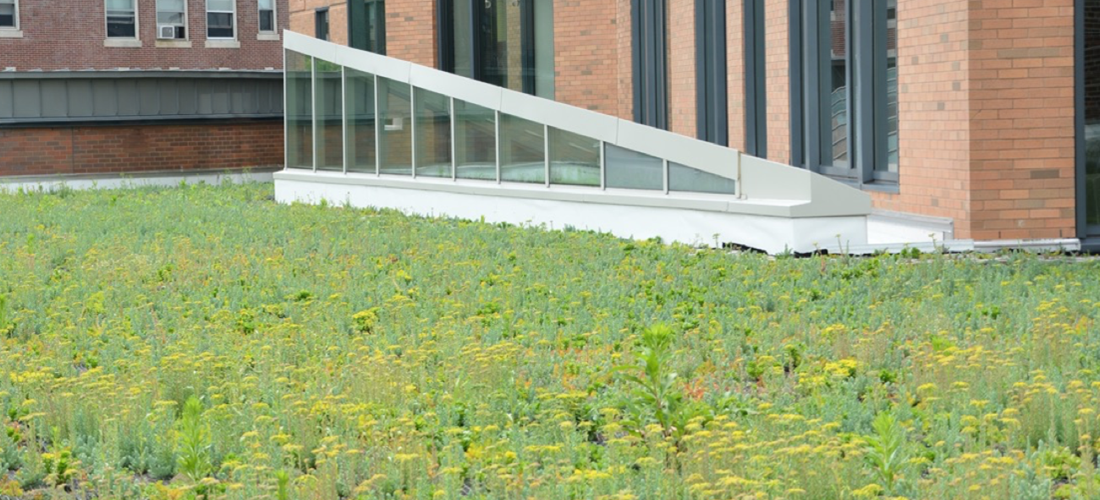The University is improving infrastructure, allowing our facilities to run smoothly as our community continues to face the impacts of a changing climate.
Resilient Buildings
This year with the addition of the Center for Computing & Data Sciences, and the Rajen Kilachand Center for Integrated Life Sciences & Engineering, Boston University is designing its campus to be ready for the impacts of climate change. Both buildings are designed to withstand extreme weather and flooding events. The Center for Computing & Data Sciences’ first floor is 1.25’ above the “elevation of resilience,” and the Kilachand Center does not have a basement, with mechanical and electrical rooms occupying the second and third floors, out of harm’s way.
Green Infrastructure
As we consider new projects, thoughtfully incorporating green infrastructure is important, especially in an urban setting due to the high concentration of impervious (paved) surfaces. Green infrastructure allows water to follow a more natural process by percolating into the ground during rainstorms. This helps recharge the groundwater system.
The Center for Computing & Data Sciences brings the latest green infrastructure to campus with its eight green roofs and seven roof terraces. The systems necessary to build these are complex, but the result is access to outdoor spaces for each of the neighborhoods within this vertical campus. Excess rainwater from these roofs is stored in a 20,000-gallon tank, which serves as a water source for irrigation. If the captured rainwater exceeds the storage tank’s capacity, the water is distributed into a groundwater recharge system. Plaza areas incorporate permeable pavement systems that help recharge the groundwater.
Medical Campus Flood Barriers
Climate Ready BU, the University’s climate vulnerability assessment, shows the BU Medical Campus will be vulnerable to flooding from sea level rise and storm surge, given its proximity to the Fort Point Channel. Protecting academic, clinical, and research space is critical; one way to do that is by installing flood barriers. In 2022, Facilities Management & Operations installed and tested a Flex-Cover Door on the basement entrance of the Evans Building (E Building). Able to be installed in under two minutes, these barriers make it possible to protect infrastructure when flooding is imminent.
